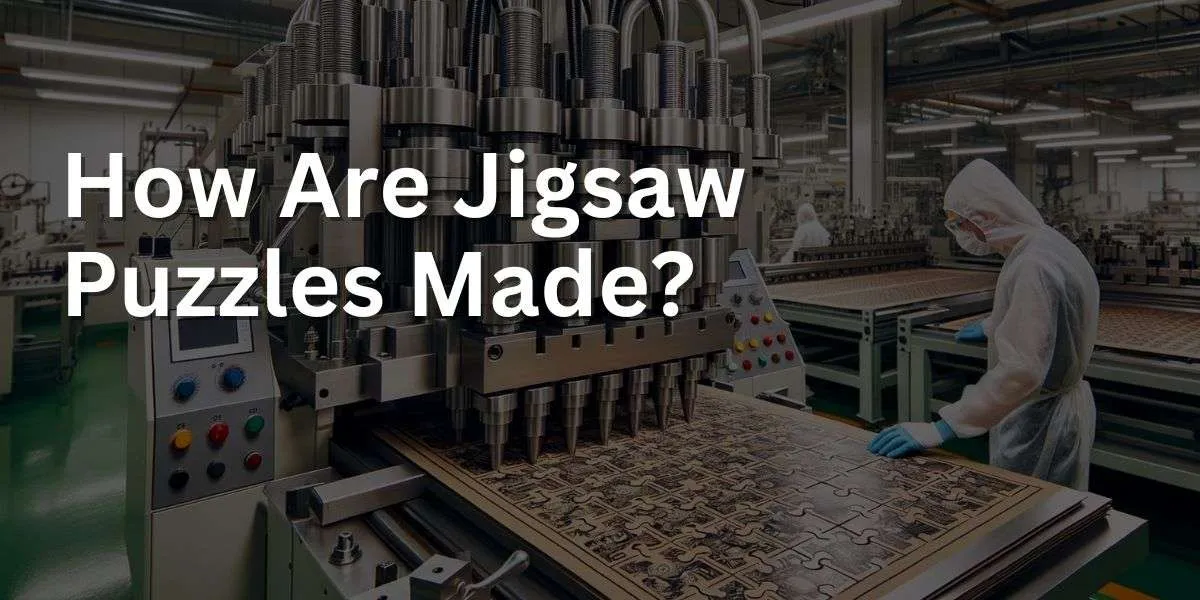Jigsaw puzzles captivate with their intricate dance of interlocking pieces, each puzzle a mosaic of challenge and discovery. Understanding how jigsaw puzzles are made offers a peek behind the curtain at the blend of artistry and engineering that brings these beloved games to life.
Fortunately, the making of jigsaw puzzles is a fascinating blend of art, technology, and precision, ensuring each piece fits perfectly into its designated spot.
Let’s assemble this story, layer by layer, and uncover the meticulous craftsmanship that goes into making your favorite jigsaw puzzles.
Jigsaw puzzles are crafted from sturdy cardboard or wood. First, an image is selected, often printed on the chosen material. This printed sheet is then adhered to the puzzle substrate. Once dried, the combined layer is fed into a press equipped with specially designed cutting dies that stamp out the unique puzzle pieces. The precision of the dies ensures that all pieces fit snugly together.
Key Takeaways on How Are Jigsaws Made
Jigsaw Puzzle Creation involves a meticulous manufacturing process, transforming artwork into a puzzle through design, cutting, and packaging, highlighting precision and artistry.
- Design Ingenuity: Jigsaw puzzles start with the selection of compelling imagery, which is then meticulously crafted into a puzzle design, ensuring a balance of challenge and attainability for the user.
- Cutting Precision: Advanced die-cutting techniques are employed to slice the image into interlocking pieces, with each cut crafted to ensure a snug and satisfying fit.
- Quality Materials: High-grade materials, such as thick cardboard or wood, are chosen for durability and a premium feel, ensuring a long-lasting and reusable puzzle.
- Printing Clarity: The image is printed with high-resolution techniques to capture vivid colors and fine details, enhancing the visual appeal and user experience.
- Interlocking Mechanism: The unique interlocking pattern of each puzzle piece is designed to provide a clear indication of fit, reducing frustration and increasing enjoyment.
- Packaging Thoughtfulness: The completed puzzle pieces are then carefully packaged into sturdy boxes, often accompanied by a guide image, facilitating storage and reference.
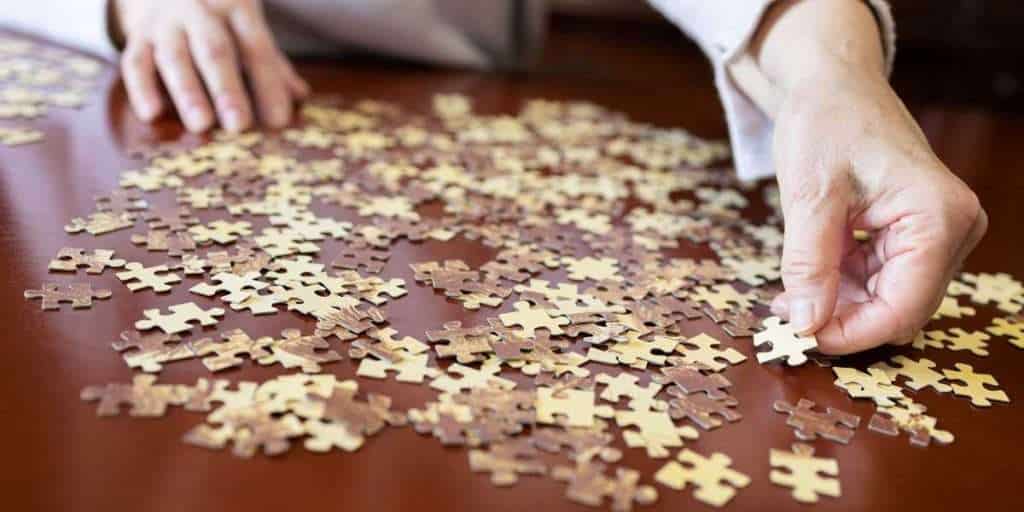
History of Jigsaw Puzzles
Jigsaw puzzles have been around for centuries and have evolved significantly over time. The first jigsaw puzzles were believed to have been created by a British cartographer and engraver named John Spilsbury in the 18th century.
Spilsbury fastened a European map onto hardwood and used a marquetry saw to cut along the national borders of the countries, creating a prototype that he called a “dissected map.” These dissected maps were used as educational tools to teach children geography.
The popularity of jigsaw puzzles grew during the 19th century, and they became a popular pastime among adults. In the early days, jigsaw puzzles were made by painting a picture on a flat, rectangular piece of wood, then cutting it into small pieces using a jigsaw, fretsaw, or scroll saw. The name “jigsaw” comes from the tool used to cut the images into pieces.
During the 20th century, the mass production of jigsaw puzzles began with the advent of die-cut machines and jigsaws evolved to be appealing to adults as well as children. Sharp, metal dies were created for each puzzle and, operating like print-making stencils, were pressed down on sheets of cardboard or softwoods to cut the sheet into pieces.
This allowed for faster and more efficient production of jigsaw puzzles, making them more accessible to the general public.
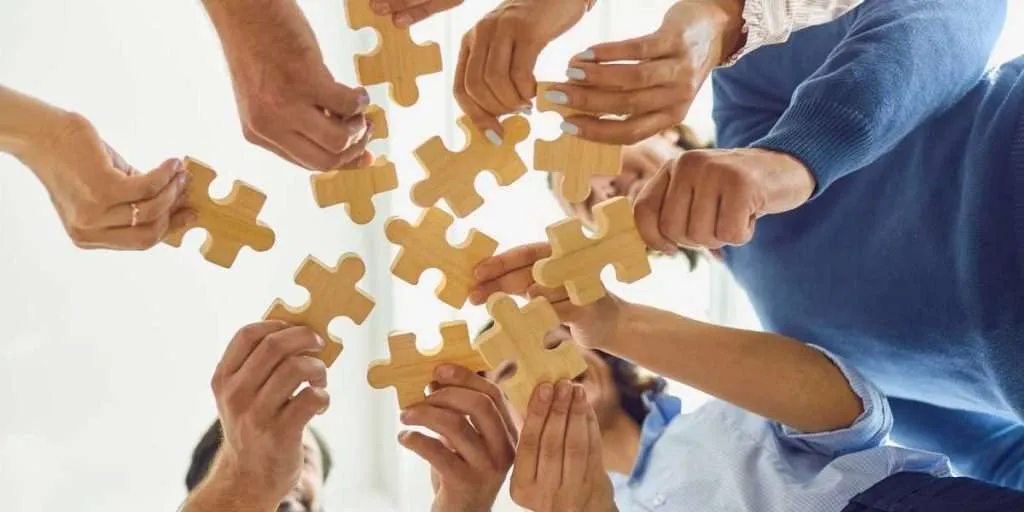
Materials Used in Jigsaw Puzzles
When it comes to making jigsaw puzzles, there are a variety of materials that can be used. In this section, we will discuss the four main types of materials used in jigsaw puzzles: cardboard, wood, acrylic, and other materials.
Cardboard Puzzles
Cardboard puzzles are the most common and affordable option available. These puzzles are made from paperboard or cardboard material that is glued together to form the puzzle pieces. Cardboard puzzles are lightweight, easy to handle, and can be printed with high-quality images. They are also recyclable, making them an eco-friendly option.
Wooden Puzzles
Wooden puzzles are made from wood or plywood material. These puzzles are more durable and long-lasting than cardboard puzzles. Wooden puzzles are often handmade and can come in a variety of shapes and sizes. They are also more expensive than cardboard puzzles but are considered a luxury item by many puzzle enthusiasts.
Acrylic Puzzles
Acrylic puzzles are made from clear or colored acrylic material. These puzzles are more durable than cardboard puzzles and are often used for 3D puzzles. Acrylic puzzles are also more expensive than cardboard puzzles but are considered a premium option due to their durability and clarity.
Other Materials
Other materials used in jigsaw puzzles include foam rubber and other durable materials. Foam rubber puzzles are made from a soft and flexible material that is easy to handle. They are often used for children’s puzzles or puzzles that require a more tactile experience.
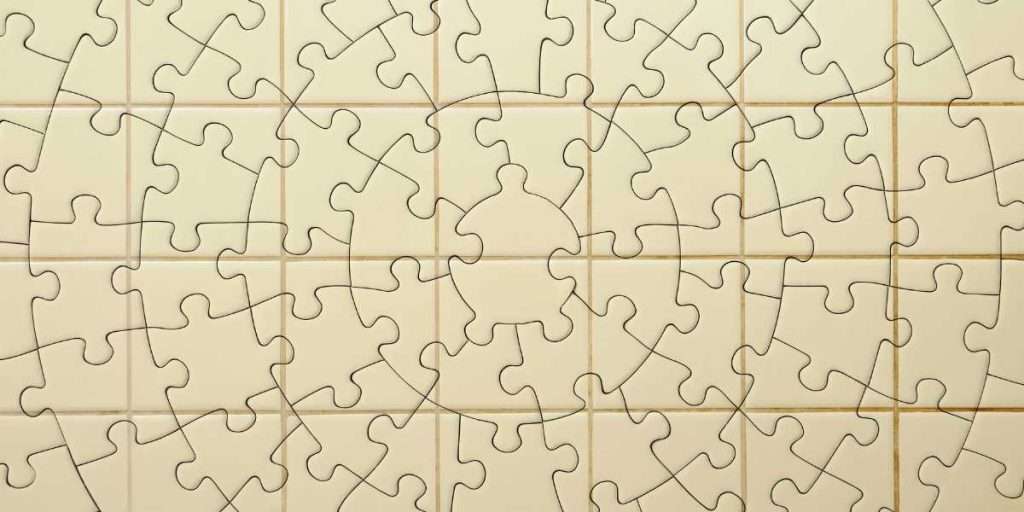
Designing the Jigsaw Puzzle
Designing a jigsaw puzzle is a crucial step in the process of making it. The first step is to select a suitable image, which can be an artwork, a photograph, or any other visually appealing design. The image should be two-dimensional and have a high resolution for the best quality puzzle.
Once the image is selected, it is then transformed into a large print, which is glued onto a sheet of cardboard or other sturdy material. The print is then cut into puzzle pieces using a cutting die, which is a sharp metal template grid. The cutting die is created based on the design of the puzzle, and it determines the shape and size of each puzzle piece.
When designing a jigsaw puzzle, it is important to consider the level of difficulty that you want to achieve. This can be done by selecting an image with a lot of detail or by adding optical illusions to the puzzle design. Optical illusions can make the puzzle more challenging by making it harder to distinguish between different parts of the image.
Designing a jigsaw puzzle can be a fun and creative process. Some manufacturers hire their own artists to create unique puzzle designs, while others use pre-existing images. Whatever the method, the end goal is to create a puzzle that is both visually appealing and challenging to complete.
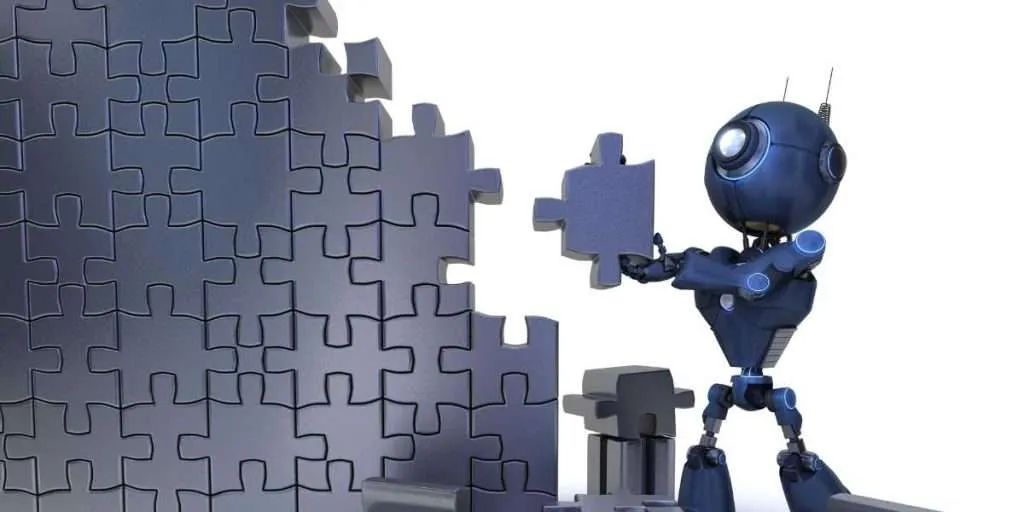
Production Process of Jigsaw Puzzles
The creation of jigsaw puzzles begins with the selection of the image, which is often a photograph or a piece of artwork that is printed on high-quality paper and then glued to a firm backing material, typically cardboard or wood. Following this, the image-attached backing undergoes a pressing process to ensure the bond is secure and the surface is smooth.
The next critical step involves a die-cut press, which is used to cut the assembled image into the unique interlocking shapes that make up the puzzle. This die-cut press uses sharp metal strips, fashioned into specific puzzle patterns, to ensure each piece is cut precisely and fits together perfectly with its corresponding pieces.
Once cut, the puzzle pieces are separated and mixed, then placed into a box that displays part of the image on the front, serving as a guide for the puzzle assembler. The box also contains information about the puzzle’s difficulty level, the number of pieces, and sometimes the history or context of the image.
Through this process, jigsaw puzzles are transformed from a simple image to an engaging activity that promotes problem-solving skills and provides entertainment for people of all ages. It’s a meticulous process that combines art and manufacturing to create a pastime that has delighted generations.
Printing Process
The first step in making a jigsaw puzzle is printing the image onto the puzzle board. The image is usually printed onto a large sheet of paper using a high-quality printer or press. The paper is then glued to the puzzle board. The puzzle board is typically made of cardboard or wood, depending on the manufacturer.
Cutting Process
Once the image is printed onto the puzzle board, it’s time for the cutting process. The cutting process involves cutting the puzzle pieces out of the puzzle board. There are two main cutting methods: random cut and ribbon cut. Random cut pieces are cut in a variety of different shapes and sizes, while ribbon cut pieces are cut in long strips.
The cutting process is typically done using a die cut press or a scroll saw. A die cut press is a machine that uses a cutting die to cut the puzzle pieces out of the puzzle flat board. A scroll saw is a cutting tool that is operated by woodworkers. It has a fine, straight blade that is used to cut intricate shapes and designs and interlocking pieces.
Quality Control
After the puzzle pieces are cut, they go through a quality control process. This involves checking each piece to make sure it is cut correctly and fits together with the other pieces. Any pieces that are not up to standard are discarded.
In addition to checking the individual jigsaw pieces, the quality control process also involves checking the overall image. The image is checked to make sure it is clear and accurate, with no blurring or distortion.
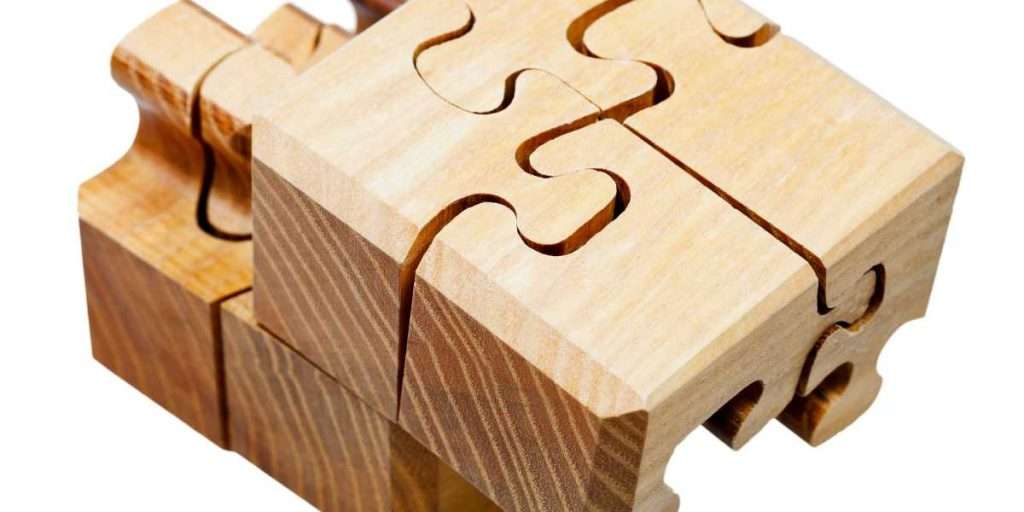
How do you make three-dimensional puzzles?
Three-dimensional puzzles are constructed to form a 3D model when assembled, rather than laying flat like traditional puzzles. Here’s a general overview of the process:
- Design: The first step is conceptualizing the final 3D structure. This involves design software where the structure is visualized and each individual piece is designed to fit accurately with others.
- Material Selection: Most 3D puzzles are made from foam-backed cardboard, plastic, or wood due to their rigidity and ease of manipulation.
- Printing and Lamination: If the puzzle is to have a design or image, it’s printed onto the chosen material. For added durability, especially for cardboard puzzles, a protective lamination can be applied.
- Cutting: Precision is key. Computer-controlled cutting machines, like laser cutters or die-cut machines, are used to ensure each piece is cut perfectly. For wooden puzzles, a fine-toothed saw might be used.
- Labeling: Pieces may be numbered or coded to help with the assembly process, especially for more complex models.
- Packaging: Once cut, the pieces are gathered, often checked for quality assurance, and then packaged with assembly instructions.
- Assembly: The end user, following the provided instructions or using the labeled pieces, assembles the puzzle to form the 3D model.
The complexity of the 3D puzzle can vary widely, from simple geometric shapes to intricate representations of landmarks, animals, or other objects. The key to a successful 3D puzzle is precise design and cutting to ensure all pieces fit seamlessly together in the intended structure.
Are all jigsaw puzzles cut the same?
All jigsaw puzzles are not cut the same; in fact, the variety of cut patterns is one of the charms of puzzle-making. Each puzzle manufacturer may use a unique die-cut pattern, which ensures that no two puzzles, even those with the same image, are exactly alike. The die, which is the cutting tool, acts like a massive cookie cutter, creating the jigsaw puzzle pieces. Since these dies are crafted by hand for each new puzzle, the cut patterns reflect the artisan’s creativity and the brand’s characteristic style.
The intricacies of the cutting process also mean that different brands and even different puzzles within the same brand can offer a new challenge due to the variation in the piece shapes and fits. This diversity enhances the puzzle assembler’s experience, as each jigsaw puzzle brings its own unique challenge to the table, making the solving process a fresh and enjoyable endeavor each time.
Some high-end jigsaw puzzles feature a special whimsy cut, where the pieces themselves are shaped like recognizable figures and objects, further individualizing each puzzle set. This demonstrates the care and thought put into the design of each puzzle, celebrating the joy of jigsaw puzzles for enthusiasts around the world.
Frequently Asked Questions on Manufacture of modern jigsaw puzzles
What materials are used to make jigsaw puzzles?
Most commercial jigsaw puzzles are made of cardboard. The cardboard is usually thick and sturdy, and it can be printed with a high-quality image. Some high-end jigsaw puzzles are made of wood, which is more durable and can provide a better experience for the user, depending on the jigsaw puzzle maker. Wooden jigsaw puzzles are more popular for younger toddlers.
How are Jigsaw Puzzles Manufactured?
Most modern jigsaw puzzles pieces are cut using a die-cutting machine. The machine uses a metal template grid to cut the cardboard into the desired shape. The template grid is made up of sharp metal blades that are shaped like the puzzle pieces. The blades are arranged in a grid pattern, and the cardboard is fed into the machine where it is cut into the desired shape.
What are some common tools used to make jigsaw puzzles?
Some common tools used to make most jigsaw puzzles include die-cutting machines, metal template grids, and printing presses. Die-cutting machines are used by the puzzle makers to cut the cardboard into the desired shape, while metal template grids are used to guide the cutting blades. Printing presses are used to print the image onto the cardboard and then put into the puzzle box.
How are large jigsaw puzzles made?
Large jigsaw puzzles are made in a similar way to smaller puzzles, but they require larger machines and more specialized equipment. The cardboard used for larger puzzles is usually thicker and more durable, and the printing process may be more complex to ensure that the image is clear and sharp.
What is the process of making a custom jigsaw puzzle from a photo?
To make a custom jigsaw puzzle from a photo, the image is first printed onto the cardboard using a printing press. The cardboard is then fed into a die-cutting machine, where it is cut into the desired shape. The resulting puzzle pieces can be packaged and sold as a custom jigsaw puzzle.
Do all jigsaw puzzles have the same number of pieces?
No, jigsaw puzzles can come in a wide range of sizes and piece counts. Some puzzles may have as few as 10 pieces, while others may have thousands of pieces. The piece count can vary depending on the size and complexity of the image, as well as the intended audience for the puzzle.
Who made the first jigsaw puzzle?
The first jigsaw puzzle was created by John Spilsbury, an English cartographer and engraver, in the 1760s. He mounted maps onto wooden boards and then cut them into small pieces, following country and county boundaries. Spilsbury intended these pieces to be used as educational tools to teach geography. By assembling them, students could gain a better understanding of the spatial relationships between different countries and regions. Thus, what began as an educational aid evolved into the entertaining jigsaw puzzles we know today.
What are Stave Puzzles?
Stave Puzzles is a renowned brand that crafts high-quality, hand-cut wooden jigsaws. Founded in 1974 by Steve Richardson and Dave Tibbetts in Norwich, Vermont, the company is known for its intricate designs, whimsical pieces (often termed “whimsies” due to their unique shapes), and the challenging nature of their puzzles. These puzzles are often considered collector’s items and can be quite expensive due to their artisanal craftsmanship. The name “Stave” is derived from the founders’ names, STeve and dAVE. Their puzzles are cherished for their detailed artistry, longevity, and the engaging experience they provide to puzzlers.

